-
Posts
3,408 -
Joined
-
Last visited
Content Type
Profiles
Forums
Gallery
Events
Store
Posts posted by mogurnda
-
-
I'd vote planted tank as well. With seagrasses, you will want the whole bottom to be deep sand, because they will spread to fill the available space.
I have been very happy with my seagrass tank. I am growing Thalassia and Syringodium, and they are easier to grow than I expected. Having real roots provides some real advantages. They can take up nutrients from the sand bed, which makes them less dependent on input from the water column, and growing roots act as a sink for nutrients. Also, if everything gets out of control and you get a nasty bloom of nuisance algae, the roots keep the plant alive even if the leaves are completely overgrown. In my system, nutrients are provided by a heavily fed 90 reef next door, so I have not had to dose anything.
For the macros, fish poop for N and P, along with careful additions of a micronutrient supplement (most are based on Guillard's f/2, and many can be found online), is often enough, especially if you plan to dose CO2 as a carbon source. You'll want a source of Ca and extra carbonate if you are growing calcareous algae like Halimeda or Penicillus. Based on my experience culturing macroalgae at work, you will want to dose carbon, nitrogen and phosphorous at a ratio of about 150:30:1 for any green macro. A source of micronutrients, like Florida Aqua Farms' Plant Fuel is helpful in moderation. The Redfield ratio (106C:16N:1P) is for microalgae, and, at least in my hands, standard nutrient mixes for algae culture cause a phytoplankton blooms. I use NaNO3 for N, KH2PO4 for P (and K) and CO2 for C (but have also used vinegar).
-
In sump chamber for Chaetomorpha, plus a connected slug tank with Bryopsis, Ochtodes, Syringodium and Thalassia. The Bryopsis is food for the slugs, the seagrasses were hitchhikers that took over.
-
One of those things that scared the pants off me when I was new to anemones, but it has happened every few months for the past 12 years, so I am used to it. Still a big spooky, though
Happened to take a few shots this time around.
The GBTA usually takes up about half of the 90 gallon.
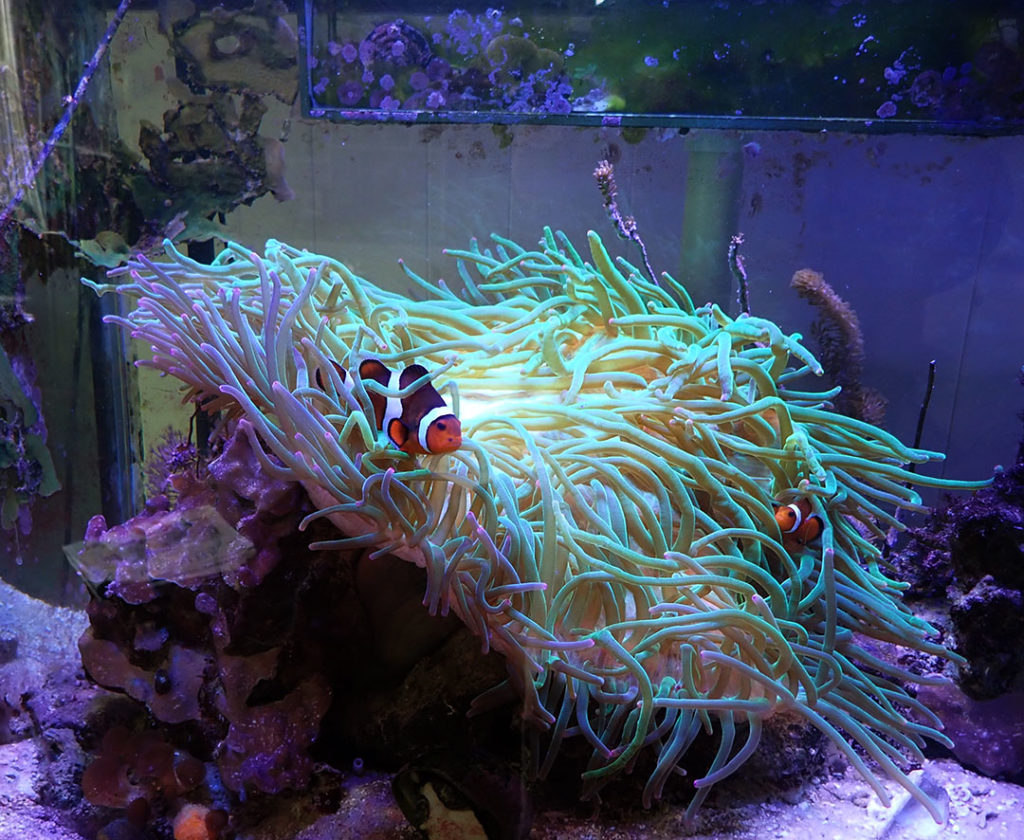
Came home a few nights ago to find it completely deflated, except for one or two tentacles. Clowns were not happy at all.
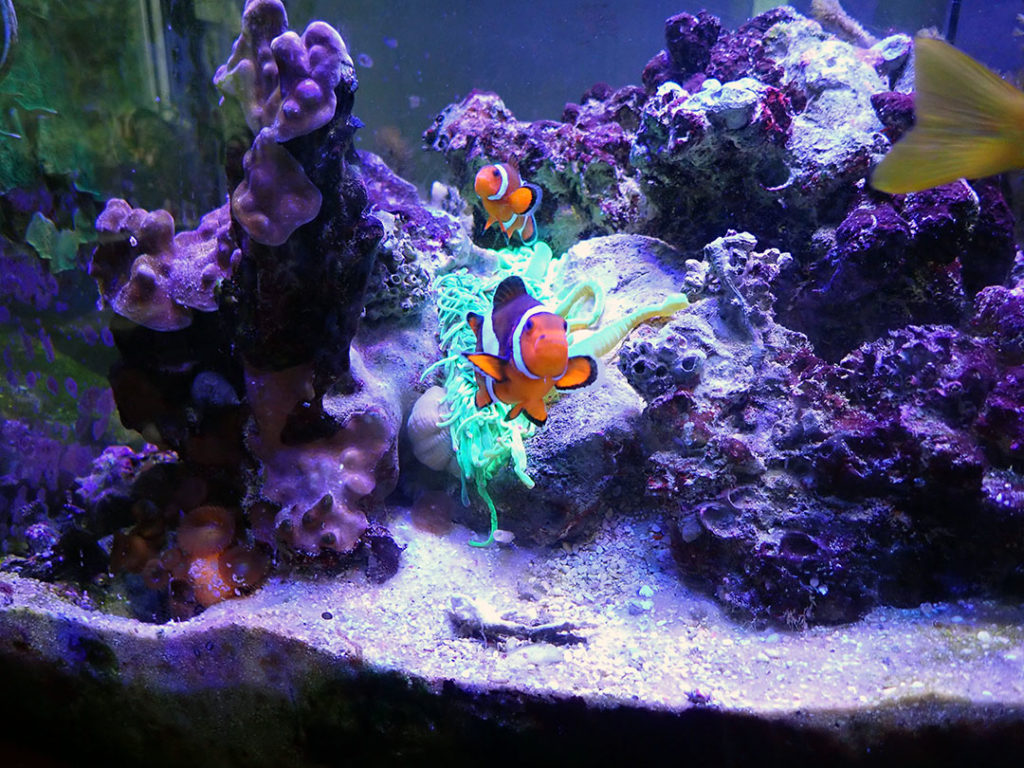
Back to almost 100% this morning.
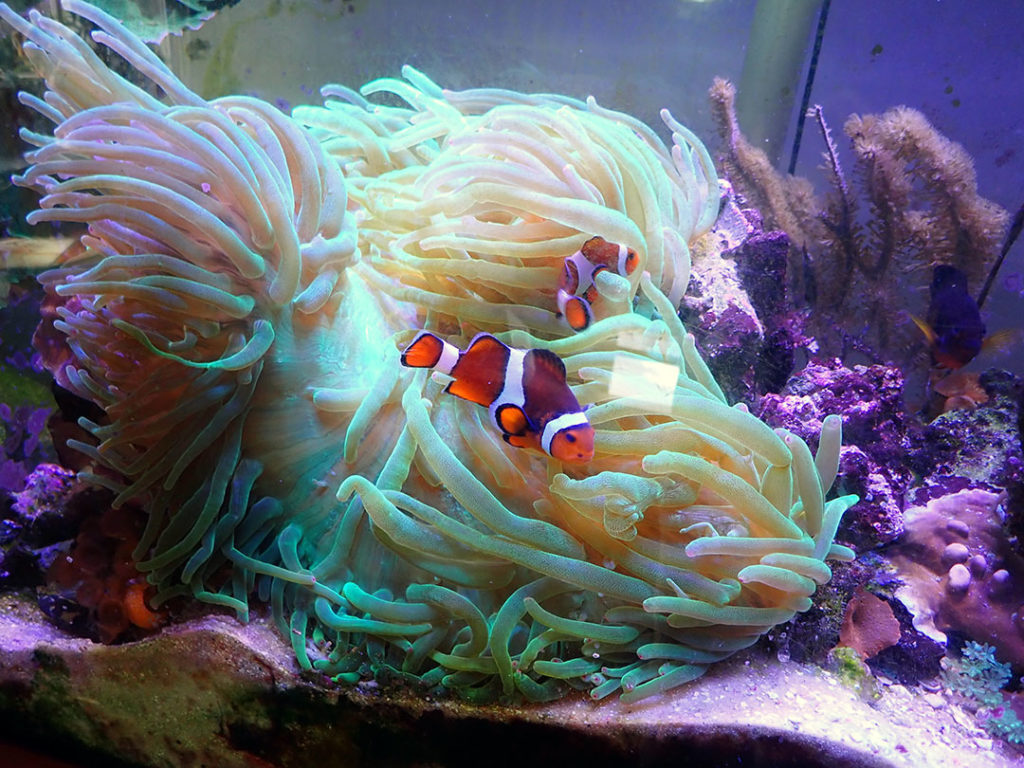
No idea why it does this. Maybe it was tired of the old water on the inside, and wanted to do a purge? Maybe it's tired of the clowns laying eggs under it, and wanted to remind them who's boss?
-
3 hours ago, lynn.reef.nerd said:
Bought a branch off of you a while back. They are doing great and grows super fast. Thank you!
3 hours ago, maevepotter said:Thanks Dave! Great to see you at the fragfest. Thanks for bringing this awesome gorgonian. Love it!
Sent from my Pixel 3 XL using Tapatalk
2 hours ago, TrueTricia said:Dave
Any chance you'll have some more of that by the Fall Meeting?
Thanks all! I don't know whether there is something special about the species, or it has just been in captivity for so long, but it seems like the most bombproof of the gorgonians.
Tricia,
My weekends are usually eaten up by work in October, but I can send some along with another local if you remind me. There is always some that needs to be cut back.
-
Looks like the famous "Scott711 Gorgonian." I brought a bunch in for the fragfest. Grows best with a lot of light, and medium to high flow. Use a razor blade or other sharp object to scrape some of the flesh from the underlying skeleton, and then glue the skeleton to the rock. I find the best way to secure it is to make a little cone of epoxy putty, and then put a hole in the top of the cone (like a little volcano). After a day or so you can use super glue or epoxy to cement the gorgonian into the hole.
Alternatively, you can just place the frag somewhere it will stay put, and it will encrust on its own soon enough.
-
I would upgrade the firmware, but definitely plug it into the router rather than using wifi. It doesn't take as much time as you might think, and allows you to get bugs fixed before they cause problems. My decision point was when I had a two week trip coming up. It would suck to discover a bug when you're thousands of miles away.
-
For the past several years, I have been exploring the world of sea slugs in the genus Elysia. They are cool for any number of reasons, including their exploitation of the chloroplasts from their food algae (kleptoplasty). I was very excited to see that one species recently made it into the journal Science, because of a weird, complicated relationship between the slug, the species of Bryopsis on which it feeds, and a bacterium in the alga that makes a toxic compound that ultimately protects the alga and the slug.
Here's the summary figure from the article (Zan et al. (2019) “A microbial factory for defensive kahalalides in a tripartite marine symbiosis.” Science 364:eaaw6732; unfortunately behind a paywall)

The authors discovered a bacterium living within the species of Bryopsis algae upon which Elysia rufescens feeds. This bacterium is responsible for the production of a chemical compound called kahalalide F (KF). The following observations are what make the story more interesting:
- The bacterium makes KF by stitching together amino acids using a biochemical pathway very different from that used by animals and plants.
- The bacterium, “Candidatus Endobryopsis kahalalidefaciens,” has adapted to the comfortable life inside plant cells by getting rid of many of its genes, and can no longer live on its own.
- Although E. rufescens concentrates KF in its tissues to deter predators, it does not maintain the bacteria in its tissues. This contrasts with the chloroplasts from Bryopsis, which a separated from the other cellular components and continue to photosynthesize in the slug.
There is a writeup on my page here: (It Takes Three to Tango). If you have access, you can find the article at https://www.sciencemag.org/
-
Thanks! Not sure why it is so unusually large, but we definitely enjoy it.
-
Dang, Dave, that is so cool.
-
Hey Garrett,
Welcome back! Great to see one of the oldsters re-emerging!
-
Thanks! I wonder how many other old-timers don't post because things aren't changing.
BTW, your frag got knocked by someone (I'm blaming the urchin), but is hanging on.
-
hogfish of some sort
-
look like hydroid medusae, or maybe small sea spiders (pycnogonida) .
-
Welcome fellow Marylander!
-
If you want to make your pot plants produce buds, then use the red "bloom" light. Apologies if this violates forum policy, but that is truly what the bloom setting is for. Macroalgae do not produce flowers, and will want a balance of red and blue, and it does not hurt to have some of the middle of the spectrum as well. I do not expect that the red is hurting your algae, but it is not likely to be helping.
I have had Chaetomorpha growing well in near-zero phosphate, and have more trouble with it if the PO4 gets too high.
Mine waxes and wanes for unknown reasons, so it may be something like that, or it could have become too dense and had poor circulation on the interior of the clump.
-
I first thought the title was "Dead Fish Care." I figured you could either cook or toss it, depending on freshness.
I have this problem all the time with the FW loaches. They lie in the most unlikely positions in the middle of the day.
-
I am in a biology department, and have access to RO water and an IT department willing to let me hook up an Apex controller to the LAN, so have it a lot easier than most. Before you set it up, make sure they don't shut off environmental controls on weekends or holidays, and that they do not spray insecticides. My office got to 99 degrees on July 4 this year (saved by the chiller), but in previous years, I learned which animals can take the heat (sea slugs) and which can't (amphipods) before I understood that facilities shut everything off during holidays.
-
On 1/29/2019 at 12:12 PM, YHSublime said:
I simply don’t care for the aesthetics of lids. But my tank is also designed to be viewed from all sides except the back pane and bottom. One of the most flattering views is a topless rimless top down. Yeah baby!
Sent from my iPhone using TapatalkMy tanks always sit high, so I miss out on the top view. Good point.
-
1 hour ago, zygote2k said:
FWIW, I’ve known him for 25 years and he has always delivered on his promises.
There have been delays but he’s always kept his word and he makes high quality components.
Theres way more to the story that’s being told here by some members- I know of some of the details and I think people are throwing him under the bus.
This is why I hesitated to post anything. No matter how bad a businessman is, someone will defend them. I stand by every detail of my story, and have the emails to prove it. I eagerly await additional details. If he has been thrown under the bus, he earned it.
-
This may sound heretical, but has anyone but me gone back to glass lids on their tanks? I haven't used glass tops on my coral tanks for about 18 years, but have recently gone back. It started in my algae culture tanks, when I realized that growth was not limited by light intensity, and I put the lids back on my 90 reef while I was away this winter. Even with some splash and salt deposits, I only lose about 20% of my PAR, but I'm only using the LEDs at 60% anyway. Cuts the evaporation rate by about 80%, so I don't have to think about the ATO as often. Corals have as much color and growth as ever so far.
Anyway, is it time to rethink the topless thing? Now that most people have shifted to LED fixtures, which put out more than enough PAR, and don't have the heat issues of halides, is there a benefit to being lidless? I guess is looks cleaner, especially for a rimless tank, but otherwise it just means you have to top off more and use some form of screen to prevent the occasional fish jump.
-
19 minutes ago, YHSublime said:
Lol, 4 years later. Lmk if you get any splits off that green anemone. I gave a ton away back in the day, but they all have disappeared.
Sent from my iPhone using TapatalkYou saying I post too often?

The anemone never splits unless it's really stressed, so I am hoping not to see a split for a while. You're first on the list, though.
-
I just installed a Reef Breeders 48" V2 LED light, replacing the old IT2080. Love the low profile and the excellent colors. Thought it was a good time for a long-overdue update.
Full tank shot. The anemone now owns about half the tank, with an island of mixed corals on the other half.
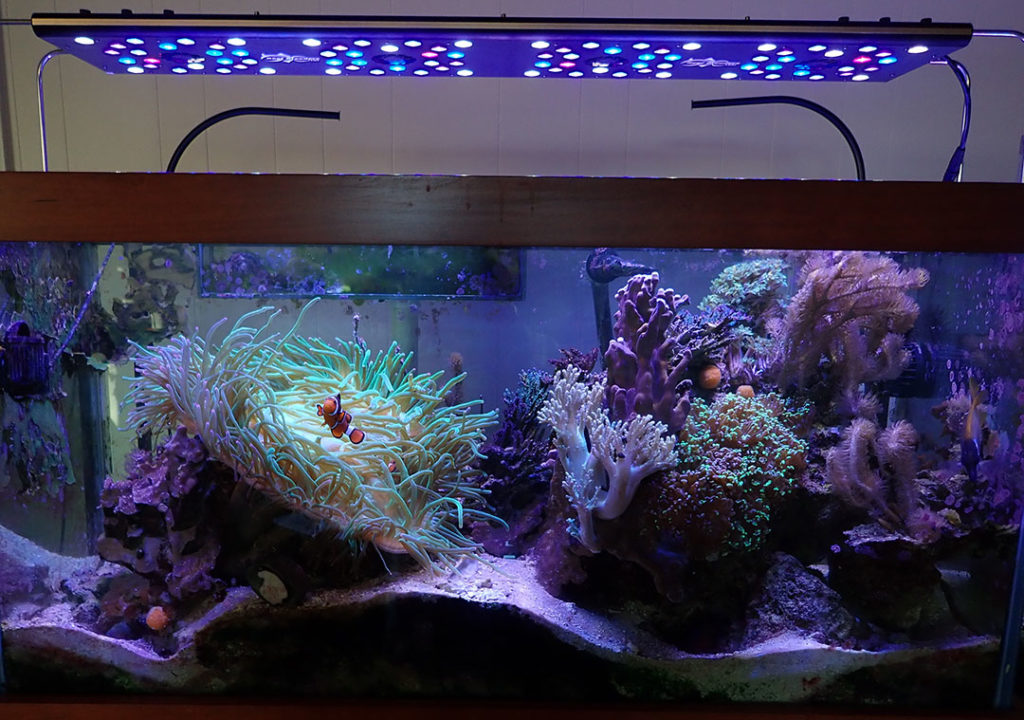
The clowns love their mcmansion.

They were posing, so I played with the macro function.
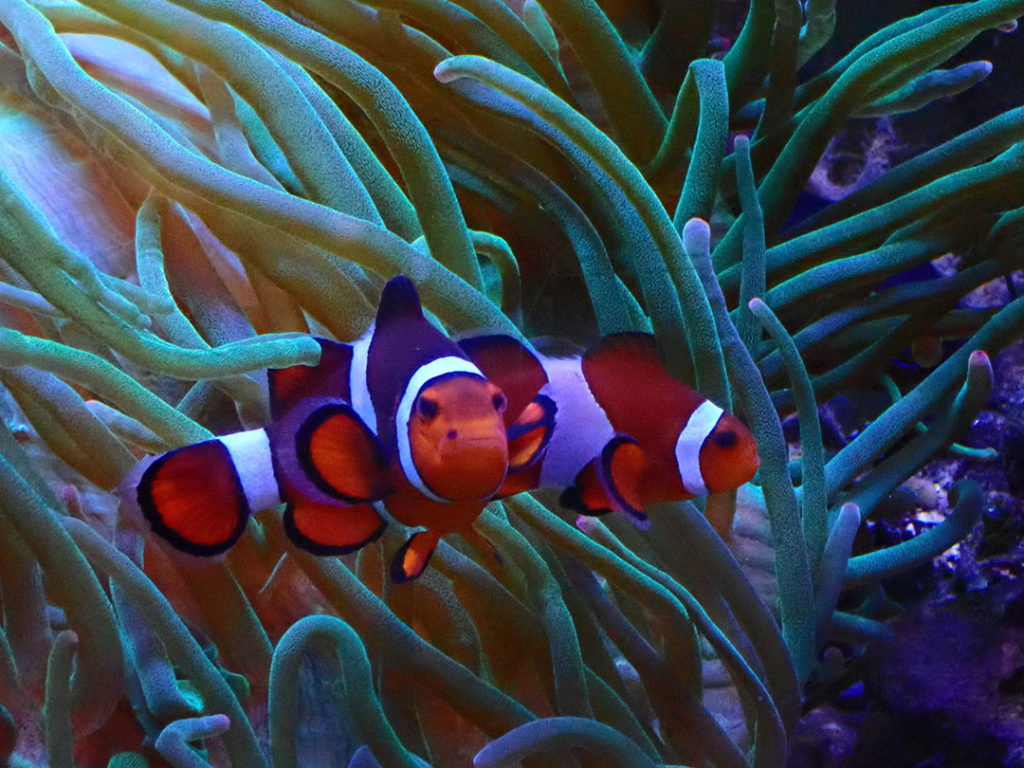
The angels and engineers are being shy, so no photos of the rest of the fish today.
Softies and hammer.
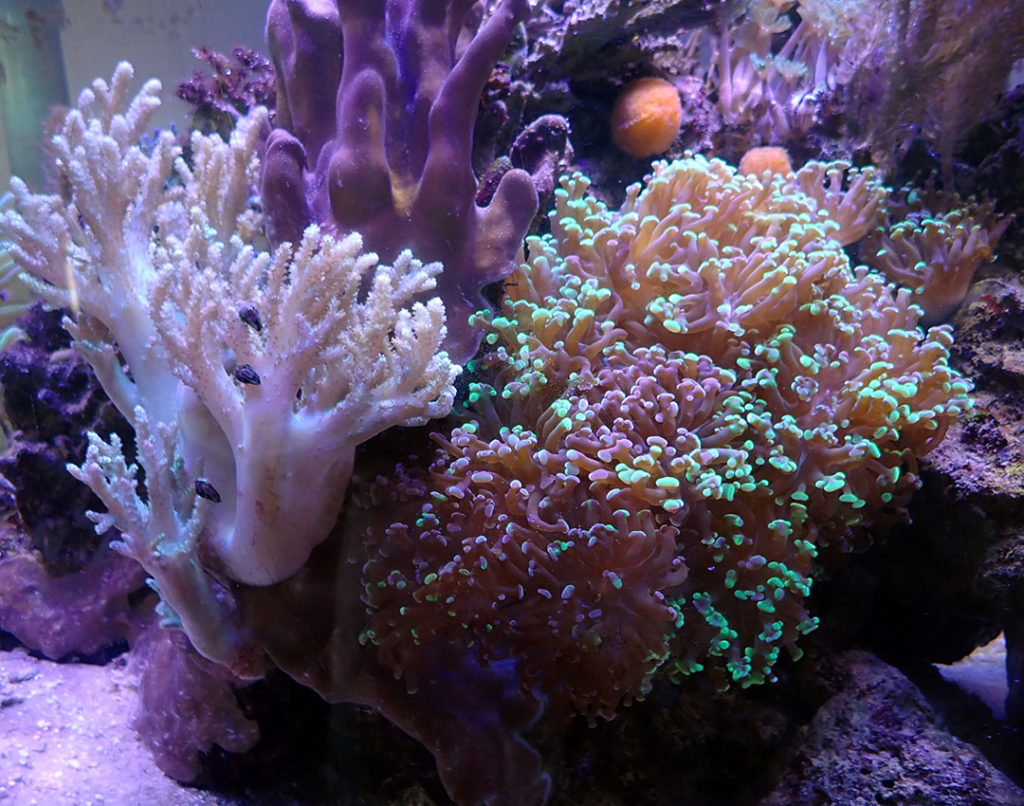
The 27 cube with turtle grass and Bryopsis (for the slugs) has been enjoying the nutrients from the 90, and is getting overgrown. Time to thin the grass.
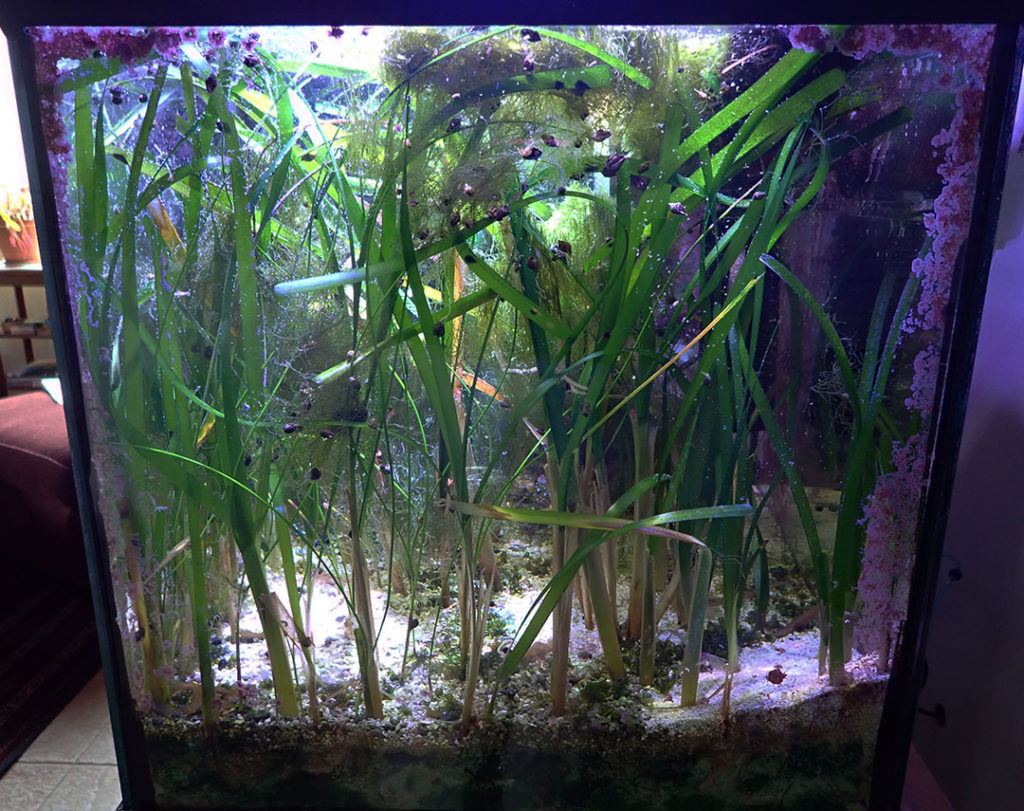
The slugs are happy, though. This photo actually shows two, but they are squished together while mating.
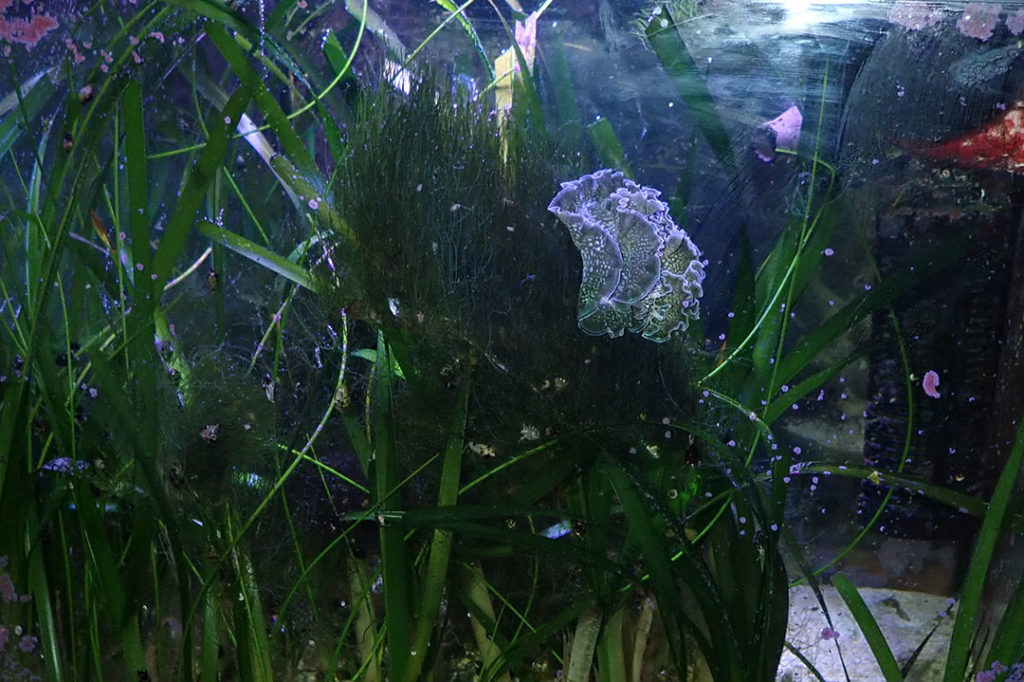
Some eggs from a recent brood. The group is producing about an egg mass per week, on average.
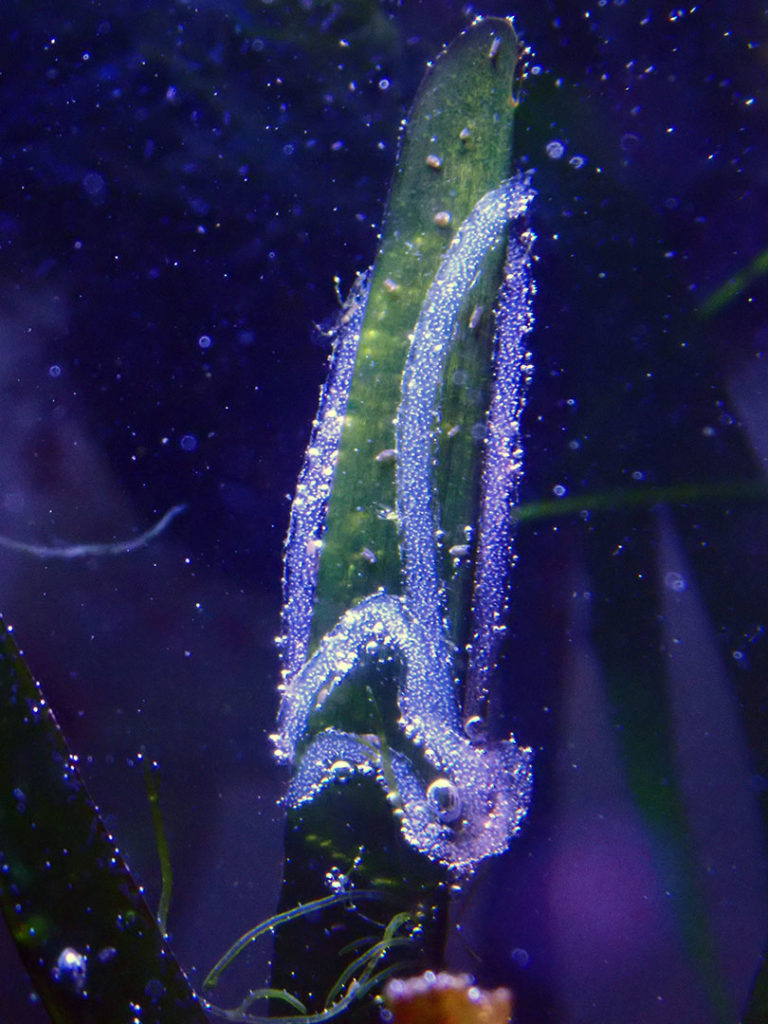
Out for a morning crawl.
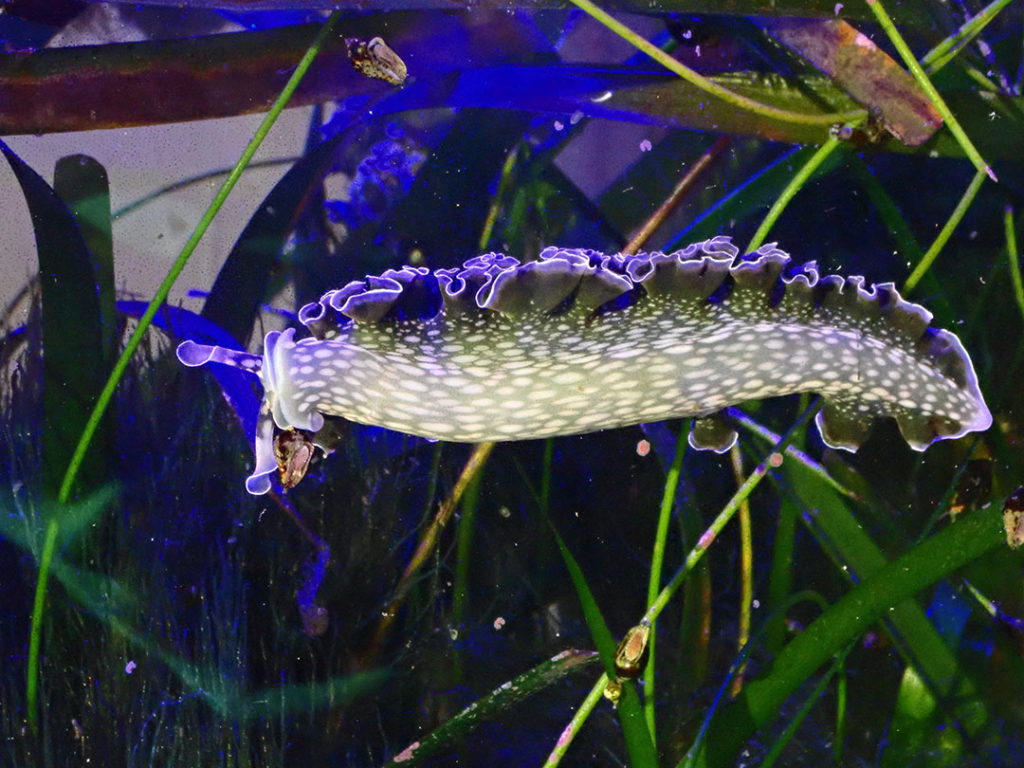
More soon.
-
1 hour ago, YHSublime said:
Juice isn't worth the squeeze IMO. You can't specifically have a wrasse go after things in particular. It may not even touch them, or it could take out all your inverts. I agree with DFR, manual removal is probably best.
Agreed. Also, do you have tridachnid clams or something else that the pyramidellids will parasitize? Otherwise, you may as well ignore them.
-
12 hours ago, KingOfAll_Tyrants said:
Would we then be content that price? This would make the yellow tang basically a beginner unfriendly fish.
I would be comfortable with a lot more fish being "beginner unfriendly." As pointed out in various posts above, it would have two positive effects.
First, fewer beginning aquarists would buy fish they are not yet able to care for. We have all made those kinds of mistakes, and they will continue to happen no matter what, but higher price tags will discourage at least some bad choices. On the other hand, this is where a lot of the money is for the retailers, because an experienced aquarist can keep a fish for years, and therefore not buy much of anything once the tank is stocked. I haven't bought a fish for at least 4 years, so am not contributing much to the industry.
Second, it will encourage captive breeding. One of the problems breeders like ORA face is that it's cheaper to buy many wild caught fish. They had to stop breeding mandarins because they couldn't sell them, for example. I expect that the number of species available will go up, and the prices will go down, when fish can be raised on a much larger scale. In my fantasy world, rare fish like carmabi basslets, which are very difficult to collect, will be more widely available once they are bred in captivity.
I still think there is a big place for sustainable collection, which benefits local communities. The problem is that the industry has never come up with a credible way that we aquarists can be sure of the origins of our fishes. None of us want to contribute to the destruction of reefs for the sake of our hobby, but we have to trust an industry that, by necessity, wants to keep costs down. It's ironic that Hawaii, with some of the best practices, cut off collection.
And Happy New Year to all.




Seagrass or Deep Reef?
in General Discussion
It's a 27-ish cube, with about 4" of sand caribbean sand. It's a mix of coarse and fine (I will try to remember the actual grades). With a mix like that, the activity of the roots and worms tends to make it stratify, with the coarse stuff going to the top. Last time I pulled out some plants, there was a massive storm of detritus, so it's definitely in there. Funny thing is that I never feed that tank, because the slugs only eat the algae, so the debris must come from the plants and, to a lesser extent, from the reef.
I can pull up the reference for the C:N:P ratio if you are interested. I dose N and P at 30:1, which may be too conservative, but it works. It's easy enough to calculate C when dosing vodka or vinegar, but I just set a pH range when I use CO2 and hope I'm getting it right.
There is a long, slow period when the plants are getting started, and you'll probably see some blooms of Derbesia and other nuisances, but it's pretty easy once the plants have settled in. I trim the turtle grass every few weeks to keep it from shading everything, and that's about it.